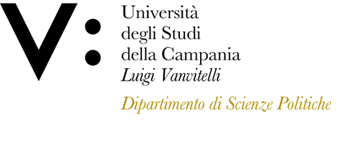Adele PASTENA
Insegnamento di DIRITTO ANGLO-AMERICANO
Corso di laurea in SCIENZE POLITICHE
SSD: IUS/02
CFU: 6,00
ORE PER UNITÀ DIDATTICA: 36,00
Periodo di Erogazione: Secondo Semestre
Italiano
| Lingua di insegnamento | ITALIANO |
| Contenuti | L’evoluzione storica dei sistemi giuridici inglese e statunitense. |
| Testi di riferimento | Ugo Mattei-Emanuele Ariano, Il modello di Common Law, Quinta edizione, Giappichelli, Torino, 2018 |
| Obiettivi formativi | L’insegnamento di diritto angloamericano intende offrire agli studenti un quadro del diverso articolarsi della famiglia giuridica di common law, a seconda che si guardi all’esperienza inglese ovvero a quella statunitense. La necessaria disamina degli sviluppi istituzionali si affianca e si sovrappone all’indagine storica. |
| Prerequisiti | Si consiglia di aver completato lo studio del Diritto Privato e del Diritto pubblico italiano e comparato. |
| Metodologie didattiche | L'analisi delle categorie del Diritto anglo-americano viene condotta attraverso il costante riferimento alla normativa ed alla giurisprudenza dei principali sistemi giuridici anglosassoni. |
| Metodi di valutazione | L'esame si svolgerà in forma orale e verterà sulle tematiche indicate nelle sezioni “Programma e contenuti”. |
| Altre informazioni | Al fine di facilitare l'assimilazione dei concetti, anche per il tramite della visualizzazione dei nessi logici, l'illustrazione degli istituti sarà costantemente accompagnata dalla utilizzazione di slides. |
| Programma del corso | Descrizione dei contenuti del corso |
English
| Teaching language | Italian |
| Contents | The historical evolution of the English and U.S. legal systems. |
| Textbook and course materials | Ugo Mattei-Emanuele Ariano, Il modello di Common Law, Quinta edizione, Giappichelli, Torino, 2018 |
| Course objectives | The teaching of Anglo-American law aims to give students a picture of the different articulation of the common law legal family, depending on whether one looks at the English or the U.S. experience. The necessary examination of institutional developments parallels and overlaps with historical inquiry. |
| Prerequisites | It is recommended that you have completed the study of Private Law and Italian and Comparative Public Law. |
| Teaching methods | The analysis of the categories of Anglo-American Law is conducted through constant reference to the legislation and jurisprudence of the major Anglo-Saxon legal systems. |
| Evaluation methods | The examination will be oral and will cover the topics indicated in the “Program and Contents” sections. |
| Other information | In order to facilitate the assimilation of concepts, including through the visualization of logical connections, the illustration of the institutes will be constantly accompanied by the use of slides. |
| Course Syllabus | Description of course content. |








